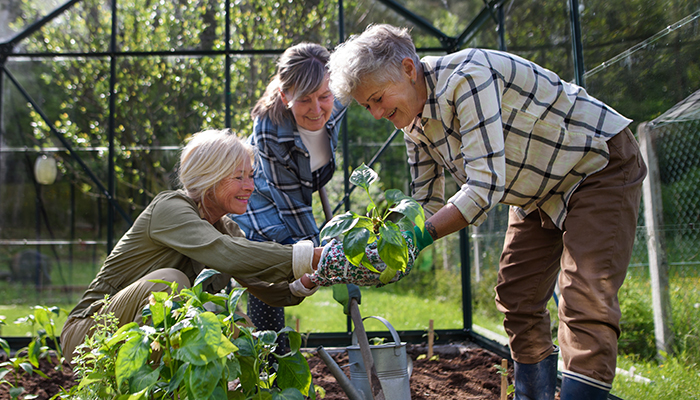
Cohousing is like a retirement community in that it is a group of residents in individual, private domiciles. Plus, there are shared facilities for group activities. What’s different is that retirement communities are created and run by a developer.
Cohousing communities are created by the people who will live in the buildings. All members hold an equal investment—personal and financial—in the process of creating and running the community. Decision making is shared and is usually by consensus.
Cohousing is the most ambitious of the housing alternatives for older adults. Cohousing is legally operated as a condominium with a homeowner’s association. But the intention is to provide much more of a group experience. A community typically begins when a few founding partners assemble like-minded people with a vision. The group buys a piece of property and remodels or builds from the ground up. The layout specifically supports social interaction. A central common space is designed to host periodic group meetings and meals. Living units are small. Parking is on the periphery. Gardening is communal. From architecture to landscaping to decision making, the group determines everything. Residents also participate in maintaining the community once it’s built and everyone has moved in.
Communities can be as large as forty households or as small as two or three. And they don’t have to be built from scratch. Some groups purchase a large, old house and remodel. Others buy an apartment complex or a mobile home park and add the communal elements. Many communities are “all ages,” but some organize specifically for those age fifty-five and older.
Caring for members as they age is challenging. As residents age and lose physical or mental abilities, they may not be able to maintain their participatory role. Over-fifty-five communities, especially, need policies that address who will care for ailing residents and who will take up the slack in terms of their communal duties. The balance between older and younger members requires careful monitoring.
Cohousing is not for everyone. It’s certainly not for those with dementia or health challenges going in. And it helps to be a relatively young older adult, since it takes an average of three to seven years to assemble a community. Cohousing also tends to be expensive. But if you are an innovator, like your privacy yet are attracted to communal living and group decision making, it can be an excellent way to offset the isolation of aging in place. Learn more about existing communities or how to start one, at the Cohousing Association of the United States.
Interested in alternative living arrangements?
Contact us! 864-271-0011

